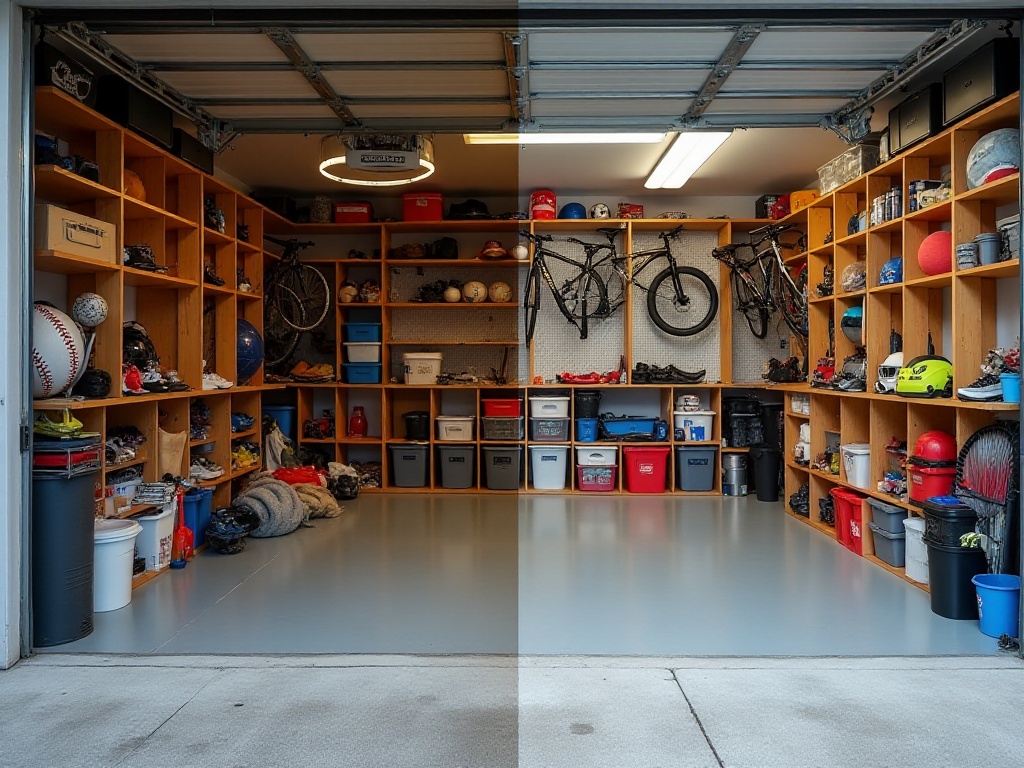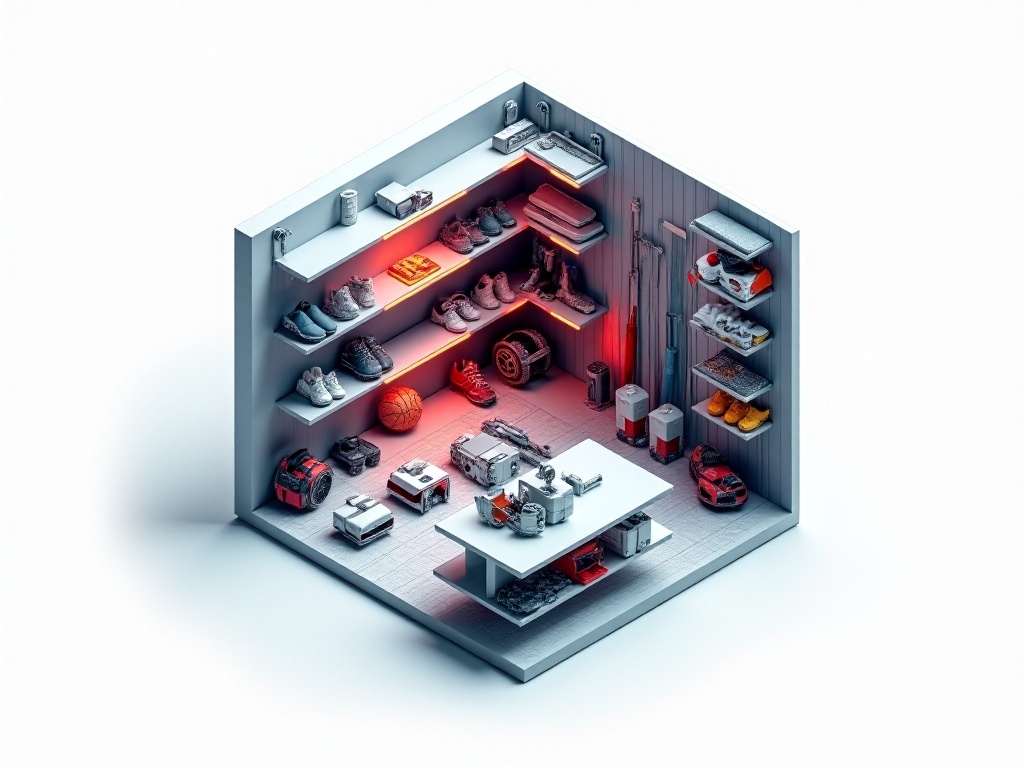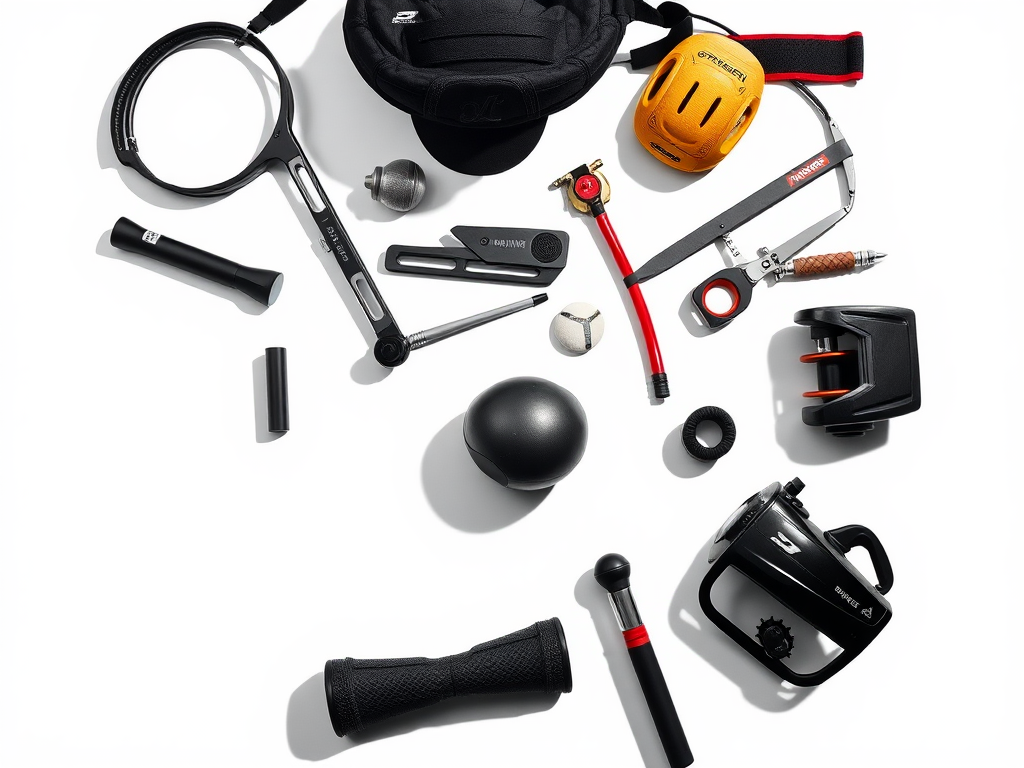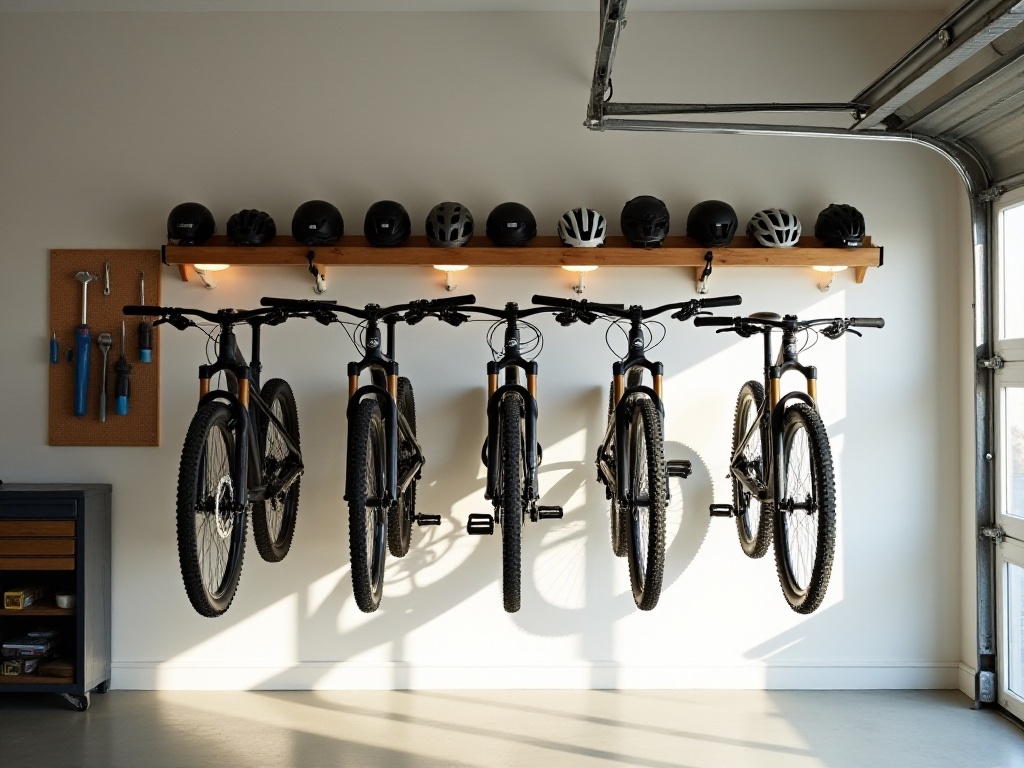Introduction
Hello everyone, I'm a storage expert who loves sports. As someone born after 1995, I deeply understand the challenge of increasingly tight living spaces. Recently, I noticed many fitness enthusiasts struggling with their mounting exercise equipment at home, reminding me of how I used to carelessly scatter my equipment around, not only affecting the living environment but also frequently losing track of needed gear. After years of exploration and practice, I finally developed a storage system suitable for small apartments that successfully transformed my little nest. Today, I'm sharing these practical storage tips with you, hoping to help solve your storage troubles.
Space Planning
Space planning is absolutely the first step to organized storage. I remember when I first started working out, equipment was randomly piled everywhere, taking up space and looking messy. Later, I had an idea and took out paper and pen to carefully map out the usage of every corner of my home. I suggest you do the same: take an A4 paper, draw your home's layout, and mark all spaces that can be used for storage, including walls, corners, behind doors, and other areas. This helps you discover overlooked storage spaces and avoid buying unsuitable storage items.
For example, my garage is an excellent storage space. Through proper planning, I transformed the originally messy garage into an organized sports equipment zone. First, I installed a row of adjustable hooks on the wall, allowing flexible adjustment based on different equipment sizes. I hung my bicycle, skateboard, and surfboard on the wall, saving floor space while keeping them accessible. On the floor, I placed several large storage boxes with wheels for storing dumbbells, resistance bands, and other small equipment. Choosing boxes with wheels is particularly practical - just pull them out when needed and push them back when done, requiring no effort.
The key to space planning is making full use of vertical space. For instance, on one wall in my living room, I installed storage cabinets, wall mounts, and hanging storage bags from bottom to top, instantly turning the empty wall into a super-capacity storage wall. In the bedroom, I also utilized the under-bed space, placing several flat storage boxes for storing seasonal sports equipment that isn't frequently used.
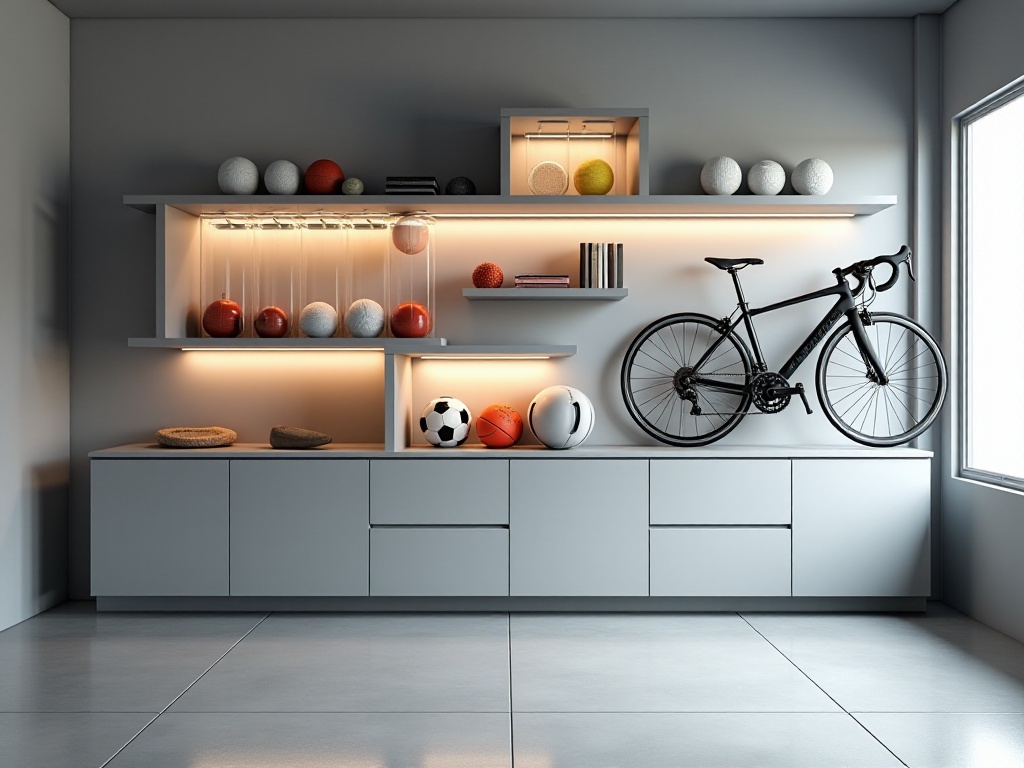
Zone Storage
When it comes to zone storage, this is my proudest achievement. After multiple attempts and improvements, I've developed a super practical zoning method. First, areas should be divided according to frequency of use. I categorize all sports equipment into three types: daily essentials, frequently used, and occasionally used.
Daily essential equipment, like my yoga mat, foam roller, and small dumbbells that I use every day, are stored in the living room cabinet. The cabinet is right next to where I exercise, making it very convenient to access. I installed several dividers in the cabinet so different equipment doesn't get mixed up. The yoga mat is rolled up vertically, saving space while preventing deformation. The foam roller is placed in the adjacent compartment, while small dumbbells are neatly arranged on the bottom layer.
Frequently used equipment, such as resistance trainers, resistance bands, and yoga blocks, are all stored in my converted bedroom gym. These items are used moderately often but don't take up much space, so I chose a five-tier open shelf to store them. Each layer is labeled, clearly indicating what equipment is stored there, making it easy to find things. The bottom shelf has some reserved space for temporarily storing newly purchased equipment.
As for occasionally used seasonal equipment like skis and surfboards, which are larger in size, I store them high up in the garage. I installed several sturdy hooks in the garage to suspend these large pieces of equipment. This not only saves floor space but also prevents equipment from getting damp. Below the hooks, I installed a small shelf for storing accessories and protective gear for this equipment.
Another key point in zone storage is considering traffic flow. What is traffic flow? Simply put, it's your movement pattern at home. I observed my exercise habits and found that in the morning, I often come from the bedroom and do yoga or strength training directly in the living room. So I place this equipment within easy reach, saving time looking for things.
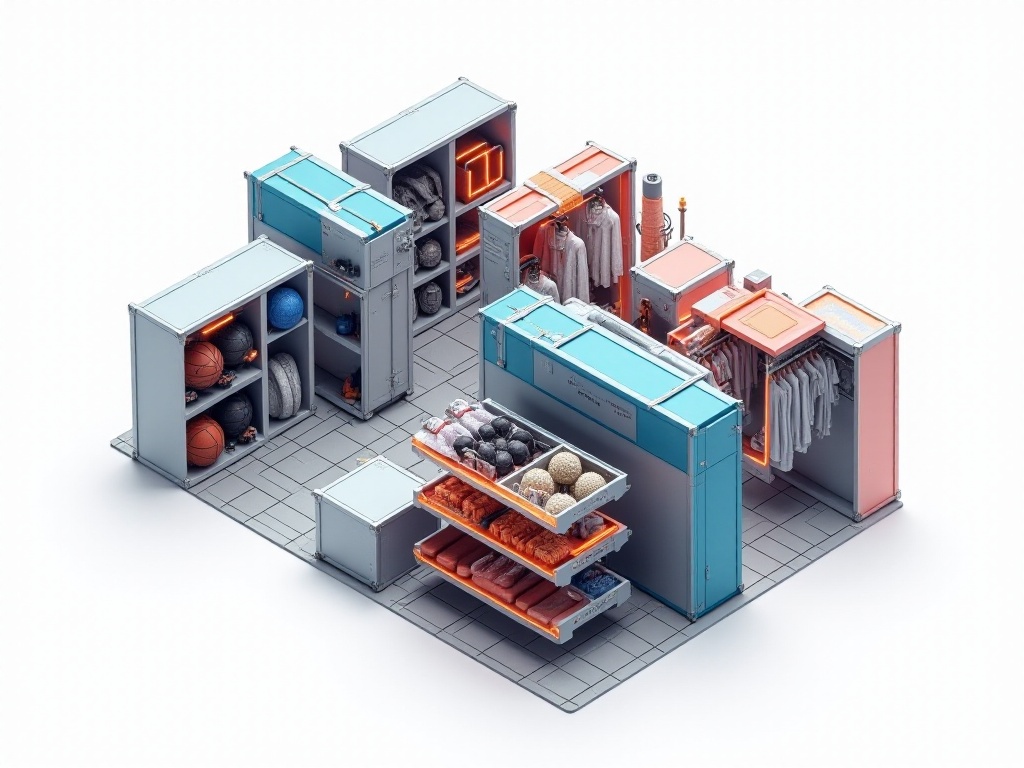
Clever Use of Tools
To do a good job, one must first sharpen their tools. When it comes to storage tools, I have some great insights to share with everyone. First, adjustable wall mounts are indispensable. These are like the transformers of the storage world - height and angle can be adjusted as needed. I use them to store my basketball, soccer ball, and volleyball. Plus, these wall mounts have excellent weight-bearing capacity, so you don't have to worry even with heavier equipment.
Mesh storage bags are another favorite of mine. They feature good ventilation, perfect for storing sports protective gear. I bought several different sizes to store knee pads, elbow pads, wrist guards, and other accessories. The mesh design not only keeps the equipment inside dry but also allows you to see what's inside at a glance, eliminating the need to rummage through things.
S-hooks can be called the all-around players of storage. They can hang sports bags and towels, and organize various rope-type equipment. I installed a row of S-hooks on the storage rack, neatly hanging jump ropes, resistance trainers, and resistance bands. These hooks have strong weight-bearing capacity, are easy to install, and can be adjusted at any time.
Storage boxes are essential tools, but choosing the right style is important. I especially recommend transparent storage boxes, preferably with lids. The transparent design lets you see what's inside at a glance, without having to open each one to check. I use these storage boxes for various small accessories like sports bands and pedometers. Choose box sizes based on actual needs - too big wastes space, too small won't fit everything.
To better utilize door space, I also purchased over-the-door storage bags. These storage bags don't require drilling for installation, they just hang on the door, making them perfect for renters. I use them to store lightweight sports items like sports headbands and wrist guards. Each pocket is easily accessible and doesn't take up any extra space.
Finally, there's the label maker, which is a magical tool for perfecting the storage system. I put clear labels on every storage box and bag, indicating what's inside. This makes it easy not only for me to find things but also for anyone helping to tidy up to know where everything goes.

Odor Control and Maintenance
When it comes to maintaining sports equipment, odor is perhaps the most troublesome issue. Especially in summer, equipment can easily develop unpleasant odors if not properly handled after use. However, this problem can be completely solved with the right methods. I've developed a super-effective three-step deodorizing method that guarantees your sports equipment will be both clean and fresh.
The first step is timely cleaning. After each workout, I wipe down the equipment surface with a mild cleaner. I want to especially remind everyone that the cleaner must be gentle - those strong, harsh cleaners might damage equipment surfaces. I usually dilute the cleaner with warm water and gently wipe with a soft towel. For equipment that can't get wet, like leather boxing gloves, you can use special cleaning sprays.
The second step is thorough drying. Cleaned equipment must be dried in a ventilated area - never rush to put it away. I've dedicated a drying area on my balcony with several retractable clotheslines specifically for drying freshly cleaned equipment. If the weather isn't good, you can use an electric fan to speed up the drying process. Remember, only completely dry equipment should be stored, otherwise bacteria can easily grow.
The third step is using deodorizing tools. I place activated charcoal bags in each storage area - these natural deodorizers work extremely well. Plus, activated charcoal bags can be reused; just place them in the sun to restore their deodorizing effect. For equipment that's particularly prone to odors, like sports shoes and protective gear, I also put desiccants and sachets in the storage boxes.
For particularly stubborn odors, I have a special trick - the freezing method. Put smelly protective gear in a sealed bag and freeze it for a few hours. Low temperatures effectively inhibit the bacteria causing odors, and when you take it out, the smell will be much lighter. However, note that not all equipment is suitable for freezing - it depends on the material.
Equipment maintenance isn't just about odor control; you also need to prevent moisture and rust. Living in the South where humidity is high, I pay special attention to these issues. For metal equipment like dumbbells and barbells, I regularly apply a layer of rust-prevention oil. Leather equipment needs periodic application of conditioning oil to maintain flexibility while preventing cracking.
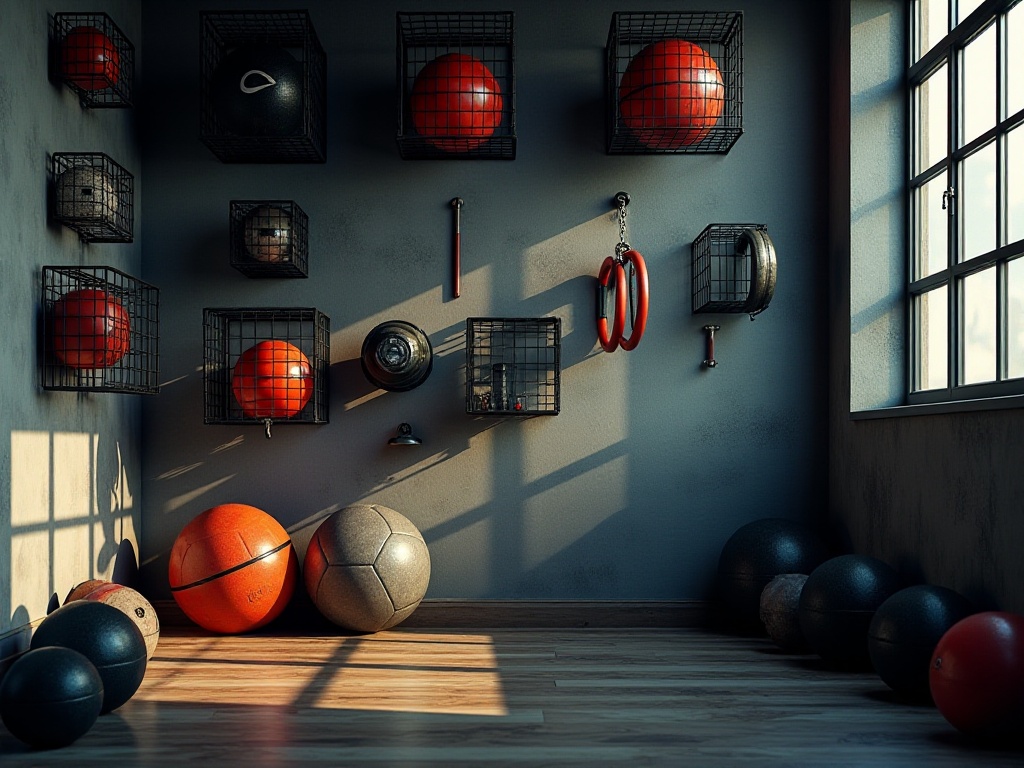
Regular Organization
No matter how well you organize initially, things will get messy without regular maintenance. I recommend doing a thorough organization every three months - this frequency is just right, neither too frequent to affect normal use nor too infrequent to let problems accumulate. When organizing, I follow a fixed process to ensure nothing is overlooked.
First is equipment inventory. I take out all equipment to check for any lost or damaged items. While this process seems tedious, it's really necessary. Sometimes you'll find equipment forgotten in corners or discover items that need repair. I record the condition of all equipment on my phone, so problems can be identified and solved promptly.
Then check storage tools. Have storage boxes deformed? Are hooks still secure? Are labels clearly visible? These details need careful inspection. If storage tools are damaged, replace or repair them promptly. Good storage tools are the foundation of maintaining tidiness - don't take them lightly.
Next is space replanning. As exercise habits change, the frequency of use for some equipment might change. This requires adjusting storage locations, placing currently frequently used equipment in more accessible places. I adjust based on usage patterns over the past three months to ensure the storage system always meets actual needs.
Finally, deep cleaning. Take this opportunity to thoroughly clean all equipment. This includes wiping, deodorizing, rust prevention, and other comprehensive maintenance. After cleaning, ensure each piece of equipment is completely dry before returning it to its place. This not only extends equipment life but also maintains a clean and hygienic storage space.
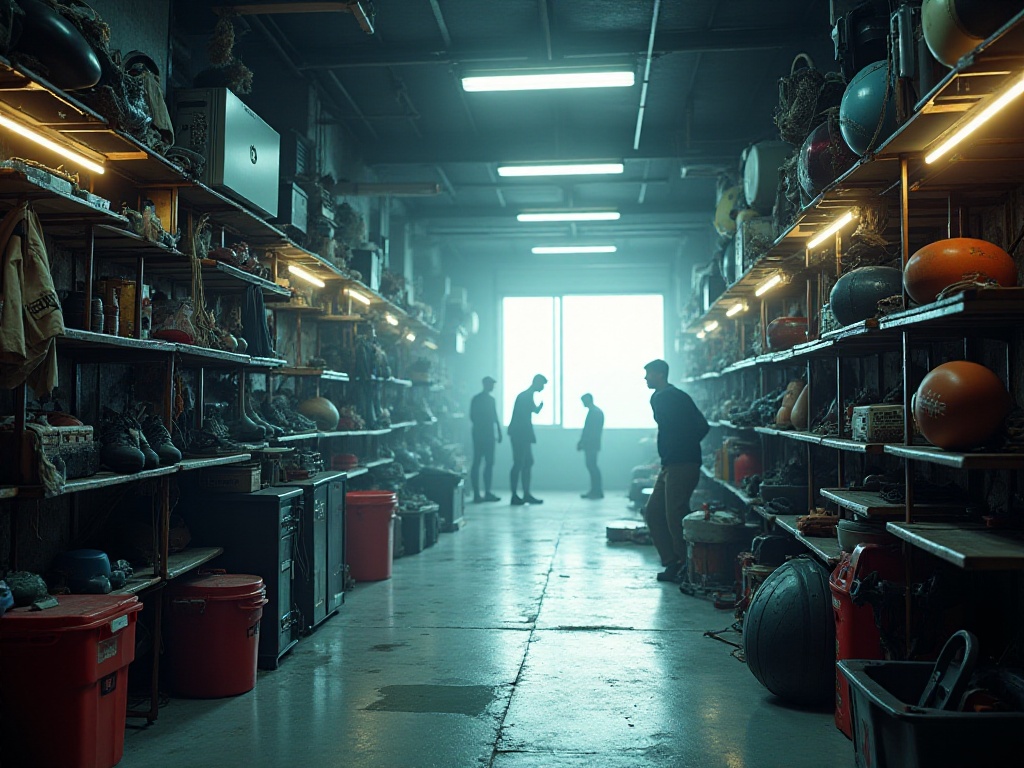
Storage Ideas
Speaking of storage ideas, I have quite a few unique tricks. For example, with transparent storage boxes, I don't just place them on shelves, but stack them in layers according to equipment size and frequency of use. Heavier equipment goes on the bottom layer, lighter items on top. Each storage box has a label and purchase date, so expired sports items can be replaced timely.
Using door space also requires technique. I installed a multi-layer storage bag behind the door, with each layer having a specific purpose. The top layer holds lightweight sports accessories like headbands and wrist guards; middle layers store frequently used small equipment like resistance bands and grip strengtheners; the bottom layer is specifically for sports towels and water bottles. This arrangement not only matches usage habits but also maintains normal door operation.
Corner space utilization is also important. I installed a corner shelf in the room's corner, turning what was once dead space into a storage helper. The corner shelf holds equipment that isn't frequently used but shouldn't be discarded, like spare yoga mats and special occasion sports equipment.
Continuous Improvement
The storage system needs constant optimization and improvement. After each organization, I record existing problems and potential improvements. For instance, if I find a location inconvenient or a storage method impractical, I adjust promptly. This continuous improvement approach makes my storage system increasingly refined.
I pay special attention to changes in usage frequency. As exercise habits change, some equipment might be used more often while others less. This requires corresponding adjustments to storage locations. Frequently used equipment should be placed in easily accessible locations, while less used items can be stored slightly further away.
Storage methods also need to be adjusted with seasonal changes. In summer, special attention needs to be paid to ventilation and moisture prevention; in winter, focus on warmth and rust prevention. I adjust storage methods according to seasonal characteristics to ensure all equipment gets the best protection.
Final Thoughts
Through this storage system, I've successfully transformed my originally chaotic sports equipment into an orderly arrangement. Now I can quickly find needed equipment for each workout and easily store it afterward. This not only saves time but also makes exercising more enjoyable.
Actually, storage isn't the goal; it's about making our fitness life easier and more quality-focused. A good storage system lets you focus on the exercise itself rather than wasting time looking for equipment. I hope sharing these experiences helps you create a neat and orderly exercise space.
Finally, I'm particularly interested in knowing what unique storage tricks you have? Or what problems have you encountered when implementing these methods? Welcome to tell me in the comments section, let's exchange ideas and improve together. After all, every little creative idea in life could become someone else's inspiration. Let's work together to create a better exercise environment!


